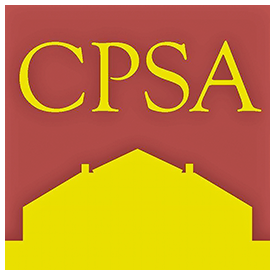One of the recommendations that came out of developing a Historic Master Plan for St Augustine, was identifying the need for a citizen’s preservation advocacy group.
The City’s Historic Preservation Officer, Jenny Wolfe, has been meeting with a group of over 25 interested people from across the preservation community; including members of “Citizens for the Preservation of St Augustine, Inc.”.
After brainstorming innovative ideas for such a group, one idea was a contest to “Name the 10 most threatened places in St Augustine” — and recently, the group released to Historic City News their first compilation developed through research and community input.
- Cottages 67 to 69 Osceola Street
Laborers and servants lived in small rental homes in the 19th and 20th centuries, some serving as domestic help in large homes on Water Street. They represent a time when homes of African-Americans were located close to their places of work in Abbott Tract. - Yallaha Plantation, 115 Bridge Street
House built in the mid-19th century, the property was the site of one of the first commercial orange groves in Florida. - Trinity United Methodist Church, 84 Bridge Street
The now-shuttered church with a cracked steeple was a rallying place during the civil rights movement in St. Augustine. - The Edson-Buell House, 36 Magnolia Avenue
At different times in its history, the home has served as the residence of both a prominent local physician and the former general manager of The St Augustine Record. - Echo House, 100 Dr. Martin Luther King Jr. Avenue
A 1920’s complex serving indigent African-Americans, largely demolished in 2014 with a demolition request for the remaining building on it’s way to the Historic Architectural Review Board for approval. - Wisteria House, 32 Granada Street
Artist Antonio Vedovelli, whose art was featured in a New York City gallery, is a former owner of this Victorian style home, recently spared from demolition. An agreement to save the building as a local landmark has been reached. - St. Benedict the Moor School, 86 Dr. Martin Luther King Jr. Avenue
One of the first Catholic schools for black people in Florida. - The Alexander-Mullis House, 56 Water Street
One of the homes Lucy Abbott built in the 1870’s in her Abbott Tract. She was of the first women to become a real-estate developer after the Civil War. - The Howes-White House, Ponce de Leon Avenue
The one-time postmaster of Anastasia and a railroad executive are among former owners of this 1890’s building in Lighthouse Park. Each story of the building has different siding. - Casa Mia, 108 King Street
Formerly the winter home of a prominent Rhode Island banker and a descendant of Mayflower Pilgrims, this building features a modern style but includes Spanish touches such as arches and a tower.
Wolfe told local reporters that they hope to offer a variety of ways that people can get involved in preserving the diversity of St. Augustine’s rich and varied history by:
• Having future “Annual Top 10 Lists” to bring attention to both threatened and restored properties.
• Sponsoring lecture series and tours on various preservation topics that would be open to the public.
• Working with the various neighborhoods and business owners to bring an awareness of preservation benefits.
• Reviewing and participating in the draft of the Historic Preservation Master Plan.
• Making sure there is legislation to protect St Augustine’s heritage, and that codes are enforced.
•Working with the City to update the Florida Master Site Files.
Discover more from HISTORIC CITY NEWS
Subscribe to get the latest posts sent to your email.




